
25 minute read
Makita – XGT Power Tools
TOOLS & EQUIPMENT MORE POWER TO YOU
In the next part of this series Kevin Brannigan, Marketing Manager at Makita looks at three XGT power-tools that have been specifically designed for high-demand tasks, and how together they can offer a solution for major renovation or demolition tasks.

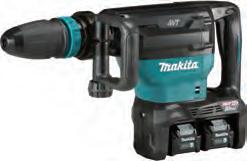
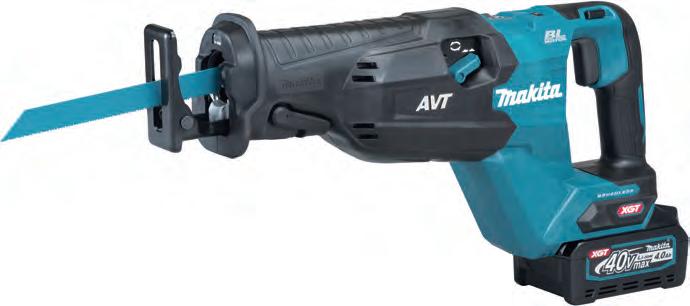
When working on renovation or refurbishment projects, one of the most labourintensive elements can be removing walls, fixtures, and fittings. A combination of a high-quality, powerful demolition hammer and reciprocating saw can help make work quicker and easier.
Historically, corded products have been the go-to solution to tackle such arduous jobs, however developments in battery technology mean that cordless products are now a viable, alternative solution for even the most demanding tasks. For example, the tools in the Makita 40VMax XGT range have been designed to deliver both high-performance and superior run times. Furthermore, selecting cordless tools with high efficiency brushless motors can improve productivity by increasing run times by up to 50% per battery charge.
Utilising cordless tools has added benefits including improved safety and flexibility. The removal of power cables improves user safety by eliminating a potential trip hazard as well as offering greater flexibility. In addition, using tools that have been designed to operate within the same battery platform also means that batteries can be switched between tools as required, making it simpler for the user.
When removing partition wall sections, a tool that can cut many different materials with minimal effort will help improve productivity. For example, with an orbital cutting action and speed of up to 3,000 strokes per minute, the
Makita JR002G XGT 40VMax Brushless
Reciprocating Saw is ideal for cutting through wood, metal, plastic and many other materials thanks to a wide choice of demolition blades. The machine also has a constant speed control that maintains the blade speed under load for more efficient cutting.
WWW.RDR.LINK/BAN069
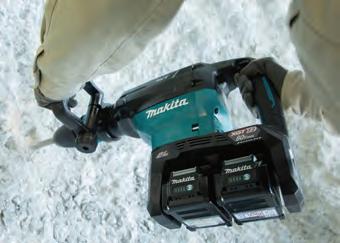

When breaking up concrete or demolishing walls and floors, a powerful demolition hammer can help streamline the work. The Makita HM001G XGT
40VMax Brushless Demolition Hammer
delivers up to an impressive 2,650 blows per minute (bpm) and 9.4 Joules (J) of impact energy per stroke. For heavier duty tasks there are also more powerful cordless tools such as the HM002G 80VMax (40VMax x2) that offers up to 1,900 bpm and an impact energy of 20.9 Joules.
WWW.RDR.LINK/BAN070
With hand-arm vibration being a serious issue in the construction industry, it is important for professionals to minimise their exposure wherever possible to prevent the harmful long-term effects on
5TH IN THE SERIES
joints and muscles. The Health and Safety Executive (HSE) has set a maximum vibration exposure level per day and when this is reached, work must stop. To reduce the risk and maximise productivity, professionals should opt for power tools that include features to minimise vibration levels, such as those that include Makita’s Anti-Vibration Technology (AVT). This is a combination of measures designed to reduce the vibration transferred from the tool to the user’s hands and arms. This extends the length of time that users can safely and comfortably operate the tools.
WWW.RDR.LINK/BAN071
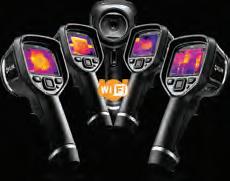

Finally, dust management is also a key health and safety concern. The HSE advises that a M-Class dust extractor is the minimal legal requirement for tasks that produce concrete, brick and mortar dust. The Makita Auto-start Wireless System (AWS), included on the HM001G and HM002G, makes this simple. It allows the tool to connect via Bluetooth to compatible dust extractors to automatically run the extractor whilst the tool is in use –providing a cleaner and healthier work environment. For cordless tools that feature Makita’s AWS Bluetooth functionality, these can also be connected wirelessly to any mains powered M-Class extractor that has a power take-off facility, by using one of the Makita wireless
adaptor units (wireless adaptor for 110v extractors – 191A40-6,
or for 240v extractors – 199804-6).
WWW.RDR.LINK/BAN072
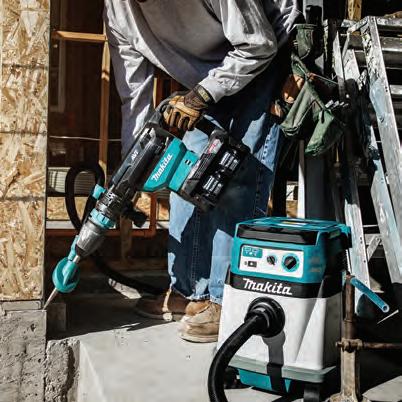
For demolition and refurbishment work it is important to invest in high-quality tools that can deliver the required performance to improve productivity and efficiency. However, it is also fundamental to consider the safety features that will help to avoid long-term health effects. Choosing tools from the same battery platform will also allow batteries to be switched between tools, providing greater flexibility.
TO FIND OUT MORE ABOUT MAKITA’S RANGE OF HIGHPERFORMANCE TOOLS AND ACCESSORIES, VISIT: WWW.RDR.LINK/BAN073
TOOLS & EQUIPMENT
BURIED UTILITIES
Contractors working around and removing buried utilities services can now protect themselves with a new product from Stopper Specialists. The Air Lance has been designed to provide a safe solution to loosening soil around buried pipes, ducts and cables prior to removal either by hand excavation or with suction and vacuum excavation methods.
GET MORE DETAILS AT: WWW.RDR.LINK/BAN074
WINTER JACKETS
Choose a weatherproof outerlayer with Snickers Workwear’s Winter Jackets. The garments – such as the new FlexiWork Quilted Jacket – will deliver on effective wind and water protection, whilst insulation, breathability and ventilation features stop you getting too warm.
GET MORE DETAILS AT: WWW.RDR.LINK/BAN075
TELESCOPIC LADDER
Available in four sizes, the BoSS TeleguardPLUS from WernerCo is a telescopic platform ladder with a safe working height of 5.15m. It provides a multi-purpose solution, with the ability to be used in flat slab mode and on stairways. The spacious platform offers plenty of room to manoeuvre and there’s a built-in tool tray.
GET MORE DETAILS AT: WWW.RDR.LINK/BAN076
THERMAL IMAGING CAMERAS
With the Teledyne FLIR range of thermal imaging cameras, tradespeople can diagnose and report problems, allowing them to fix issues and improve the energy efficiency of a property. The Ex-Series range features resolution options up to 320 × 240 infrared pixels and the ability to accurately measure temperatures from -20°C to 550°C, whilst the Exx-Series benefits from onboard inspection routing.
GET MORE DETAILS AT: WWW.RDR.LINK/BAN077
Use our digital reader enquiry service for further information online

ON THE MONEY

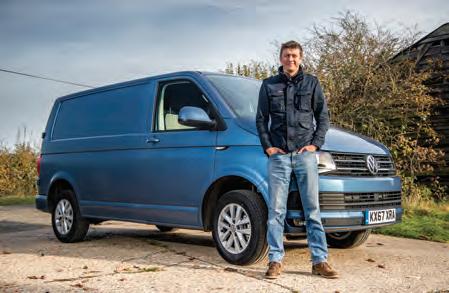
Are you considering an electric van? Dan Powell from Honest John Vans explains your finance options.
Electric van finance can be confusing, but the process is actually relatively simple with the cost of the vehicle being spread over monthly payments. The cost of the payments will depend on the type of finance package you choose and the value of the vehicle. You may also be charged interest (APR) and fees for damage of excess mileage, which means the total cost of the vehicle may be higher than buying it outright.
When it comes to electric van finance, it is usually split across four options: leasing, contract hire, personal contract purchase and hire purchase. In all cases, you will be signing a financial agreement that will commit you to the duration of the agreed contract so it’s important to be aware of the commitment you’re making.
Contract Hire
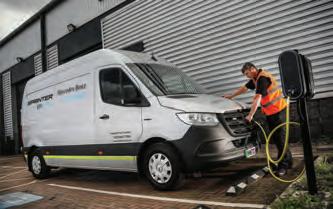
Similar to Leasing, a Contract Hire agreement is a long-term vehicle rental. The term is typically between one to five years and often has a mileage limit for the hire period. These agreements are most most attractive options to small
businesses due to the fact that they only require a small initial outlay.
Maintenance is often included in the contractual agreement, however, the van must be returned in reasonable condition and any damage will result in a penalty fee. As you do not technically own the vehicle there are no depreciation costs and the monthly payments are allowable against tax.
Leasing
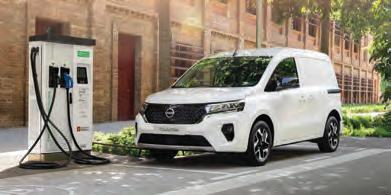
‘Leasing’ is basically a long-term vehicle rental that is split between two and four years. You pay an up-front fee, plus monthly payments for the length of the lease. The management and maintenance of the van is handled by the leasing company. There is no depreciation to worry about and at the end of the contract you return the vehicle to the manufacturer or finance company.
Leasing deals can be one of the cheapest ways to finance a new van, but there’s usually no option to buy the vehicle at the end of the contract. Most leasing agreements will also restrict the number of miles you can drive in a year, which means you’ll be charged if you exceed the agreed limit.
Personal Contract Purchase (PCP)
PCPs are very popular. Instead of paying off the entire value of the vehicle over the term of the agreement, you only pay off the depreciation. As a result, the deposit and monthly payments tend to be lower than a traditional hire purchase agreement.
A PCP will let you spread the cost of the finance over a number of years. Payment is split between an initial deposit, followed by monthly payments over the term of the contract and an optional ‘balloon’ payment at the end (which you pay if you want to keep the vehicle).
The advantage of PCP is the options you get at the end of the contract, which lets you buy the vehicle, swap it for a new model (and new PCP agreement) or walk away.
Paying the ‘balloon’ payment means you can keep the vehicle and this can be split over two or three years if you cannot afford the lump sum. Alternatively, you can return the van to the dealer and put any equity towards the deposit for a different vehicle or walk away from the agreement altogether.
As with any finance agreement, a PCP will require you to commit to the finance agreement for three or four years. You will also be asked to agree to a mileage limit and you’ll be charged a fee if you hand the van back with any damage.
Daniel Powell of Honest John Vans
Hire Purchase (HP)
In a hire purchase contract, the cost of the van is split into a deposit and monthly instalments, plus interest, which is paid over a number of years. The loan is secured against the van, so you do not own the vehicle until the final instalment is paid.
HP is similar to a PCP, but the full cost of the van is spread across the contract. There is no ‘balloon’ payment, but the monthly costs tend to be higher. The same risk applies to both hire purchasing and PCP; if you cannot afford the payments, you will have to return the vehicle.
FOR MORE VAN BUYING ADVICE, VISIT: WWW.HONESTJOHN.CO.UK/VANS OR TYPE “HONEST JOHN VANS” INTO YOUR ONLINE SEARCH ENGINE, OR VISIT WWW.RDR.LINK/BAN078
Electric vans are increasing in popularity, but should you buy one for your business? Sarah Tooze from Desperate Seller reveals the top five things every builder needs to check before going electric.


CURRENT AFFAIRS


With the 2030 ban on petrol and diesel vans looming large over the horizon, you may be wondering if now is the right time to make the switch to electric.
Electric vans are more expensive to buy than their diesel counterparts but they offer significant long-term savings when it comes to fuel, tax, and maintenance costs.
Electric vans are easier to drive and more refined than their diesel rivals, which means they tend to be more comfortable over a long journey. The latest crop of electric cargo carriers from Ford, Vauxhall and Peugeot will also deliver heavy-duty load carrying capacity that will easily match the latest diesel panel vans.
However, before you ditch your diesel, there are some important things you should be aware of. Sarah Tooze, editor at the online van marketplace, Desperate Seller, reveals the top five things you need to know before joining the electric revolution.
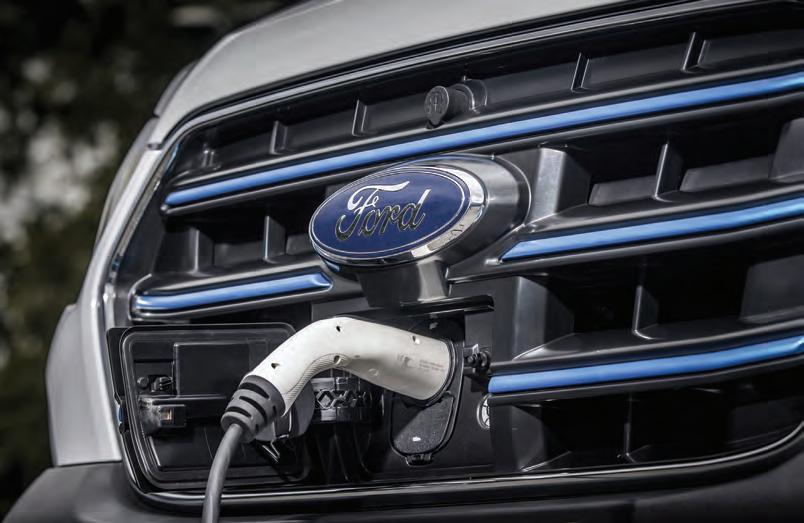
Work out your mileage
How many miles do you drive a week? Does your daily commute involve long motorway trips or are you a local builder who covers lots of short journeys?
Before you set foot in a van showroom, you’ll need to work out what your daily and weekly mileage is (then add 20% to cover those unexpected trips to the builders’ merchant). Once you have an idea of your mileage, you can start shortlisting vans.
The Ford E-Transit will cover between 166 and 196 miles on a full charge, while the Vauxhall Vivaro-E is advertised with a maximum range of 205 miles. It’s important to note the real world range may be slightly lower than the advised figure as things like air conditioning and heating will require extra power from the van’s EV battery.
Do the maths
An electric van could save your business thousands every year. Charging the 75kWh version of the Vivaro-E will cost £21 (at 28p/kwh) and give you around 200 miles of range. A diesel van that returns 47mpg will cost at least £37 to fill (at 191p-per-litre) and you could save even more if you charge your van at home on an overnight tariff.
Electric vans are more expensive to buy than their diesel rivals, however. The Vivaro-E, for example, is around £5,000 dearer than the standard diesel model. But road tax is free and electric vans also have fewer moving parts than diesel vehicles, which means maintenance and servicing costs tend to be lower. Many supermarkets and public car parks will let you charge your van for free. Electric vans are also exempt from clean air zone charges, like the London ULEZ.

Take charge
Obviously, if you buy an electric van, you’ll need somewhere to charge it. And a home charger is the cheapest and most convenient way for your business to operate an electric van.
Charging your van via a three-point plug will take all day, so invest in a home wallbox if you have a driveway as this will cut the charging time to seven hours.
There are more than 33,000 public EV charging points in the UK, and more are being added to this figure every day. Some public charging stations are free to use. Rapid charging is the most expensive way to charge your van but is useful if you get caught short, boosting your battery from 10% to 80% in around 30 minutes.
Check your weight
Payload capacity and loadspace is generally the same as diesel and petrol vans but electric vehicles tend to have lower towing capacities than their diesel counterparts. The Vivaro-E, for example, will tow a braked trailer up to 1,000kg –so always check the spec if you need your electric vehicle to tow heavy tools or equipment.
The Government changed licensing laws in 2018 to make it easier for people to drive electric vans. This means you can operate an electric van weighing up to 4,250kg with a standard driving licence (instead of the 3,500kg you’d normally be limited to with a petrol or diesel vehicle).
Take a test drive
Have you ever driven an electric van before? If you haven’t, you’ll probably find the experience a little strange at first because electric vans are silent and don’t have a manual gearbox.
Electric vans also use regenerative braking, which recovers energy to top up the battery when you slow down. This means the van will lose speed when you lift your foot off of the accelerator much quicker than a standard diesel vehicle. As a result, we’d recommend taking an electric van for a lengthy test drive so you can see if it is something you feel comfortable with.
FOR MORE INFORMATION ON
DESPERATE SELLER VISIT: WWW.RDR.LINK/BAN079

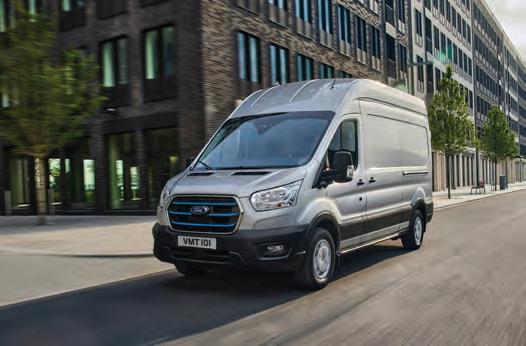
RANGER PLATINUM
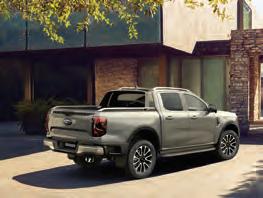
The range-topping Ford Ranger Platinum features a premium interior, advanced connectivity, and powerful new Ford 3.0-litre V6 turbodiesel engine –producing 240PS and 600Nm of torque. It’s towing capacity is 3,500kg and the vehicle is available exclusively in five-seat, double cab specification.

GET MORE DETAILS AT: WWW.RDR.LINK/BAN080
PRO+ RANGE

The revised Renault PRO+ range includes a new trim line-up comprising Start, Advance, Extra and Extra Sport models, and the first vehicle to adopt the new model structure will be the Kangoo. The manufacturer has also simplified its portfolio by 38%, reducing the previous offering of 161 separate versions into a core of 100 distinct models.
GET MORE DETAILS AT: WWW.RDR.LINK/BAN081
INSURANCE

3,314 vans were stolen in London over the past year, according to new data from Direct Line business insurance. This equates to nine thefts each day between September 2021 and August 2022. The company provides a small courtesy van as standard to support customers if their van is stolen, damaged, or written off.

GET MORE DETAILS AT: WWW.RDR.LINK/BAN082
FORD TRANSIT CUSTOM

Tiling contractor, Dan Tapper knows all about a flawless finish – so he was mightily impressed with the smooth purchase and delivery of his latest Ford Transit Custom, from independent supplier Van Sales UK. The 2.8-tonne gvw van has a compact L1 body and is powered by a 2.0-litre EcoBlue engine which generates 96kW/130ps, and drives the front wheels through a six-speed manual gearbox. It boasts a 6m3 loadspace, can carry a payload of up to 738.7kg, and returns up to 38.7mpg (WLTP Combined).
FOR FURTHER INFORMATION ON TAPPER TILING VISIT: WWW.RDR.LINK/BAN083 TO READ DAN’S FULL VERDICT ON HIS NEW VAN VISIT: WWW.RDR.LINK/BAN084

PICK-UP
It’s the Ford Performancedeveloped twin-turbo 3.0litre EcoBoost V6 engine in the Ranger Raptor that delivers phenomenal onand off-road ability, according to the manufacturer. The Ford pick-up delivers 292PS and 491Nm of torque, seven selectable drive modes and a new full-time four-wheel drive system.
GET MORE DETAILS AT: WWW.RDR.LINK/BAN085
VAN BREAK-INS
A reinforced Renault Trucks Trafic can now be specified with a Cat 1 alarm and fully lined interior and floor. Security is further bolstered with a fully sealed steel mesh internal door system with an internal five-point locking mechanism fitted to rear and side, with apertures finished off with an external high impact clear Perspex covering.

A VIDEO THAT DEMONSTRATES THE TRAFIC VAN’S ROBUSTNESS IS AVAILABLE TO VIEW HERE WWW.RDR.LINK/BAN086
ARMD & POWERED NOW
ARMD, the platform designed to combat the effects of tool theft and protect the livelihoods of tradespeople with tech and smart insurance, has announced a partnership with Powered Now, the easy-to-use app that lets you run your trade business on the go. The partnership brings all the benefits of the ARMD platform to the growing number of users of the Powered Now app at a special membership rate.
FOR MORE ON THE NEW PARTNERSHIP VISIT: WWW.RDR.LINK/BAN087 FOR MORE DETAILS ON POWERED NOW VISIT: WWW.RDR.LINK/BAN088
TRADE MEDIA
VANDERSANDEN TEXTURE GENERATOR

Clay paver textures for garden and landscape projects have been added to the Vandersanden Texture Generator. The resource allows the rendering of designs in a detailed and lifelike way and is already available for facing bricks and brick slips. Users can experiment with formats and laying patterns, mix colours or create their own unique colour mix.
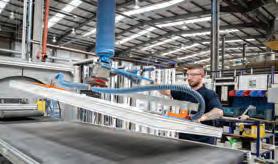
GET MORE DETAILS AT: WWW.RDR.LINK/BAN089
VIRTUOSO DOORS WEBSITE
There’s now a ‘design-adoor’ portal on the updated Virtuoso Doors website, an easy-to-use service which allows you to create a door for your project in just a few clicks. The site showcases the complete range of composite doors and accessories, in both traditional and contemporary styles. It also includes the design-a-door portal.
GET MORE DETAILS AT: WWW.RDR.LINK/BAN090
PJH AUTUMN/WINTER BATHROOMS TO LOVE COLLECTION

Lifestyle photography, practical product information and design ideas are all included in the latest PJH publication. The furniture, sanitaryware, washbowl, bath, shower tray, mirror, lighting and accessory collections are all included with new launches, spanning a range of price points.

GET MORE DETAILS AT: WWW.RDR.LINK/BAN091
ALLUR COMPOSITE DECKING WEBSITE
Key additions to the Allur composite decking website include a handy visualiser tool where users can hover over a decor to see what it looks like in a realistic virtual setting. A day-to-night slider shows how the decking will look in the evening when enhanced with lighting, and the gallery page showcases creative uses of decking in outdoor projects.
GET MORE DETAILS AT: WWW.RDR.LINK/BAN092
Dampness problems in buildings have been in the news again and –as someone who makes a part of his living by investigating them – I can say I’m not at all surprised.
The recent news stories have concerned health problems caused by mould growth, with one tragic case involving a youngster whose death was attributed to living in damp, mouldy accommodation. All very sad.
And this situation is set to get worse, as the rocketing cost of gas, oil and electricity means that many more poorer families will be unable to heat their homes adequately.
Newspapers and TV shows are full of helpful hints to the public on how to save money by turning their thermostats down, only heating one or two rooms, and draught-proofing their doors and windows. Unfortunately, cold rooms with less ventilation are going to mean a rise in relative humidity, and an increase in mould growth.
The UK has a damp maritime climate. These islands are surrounded by sea, and the prevailing weather pattern brings us moist air from the Atlantic at most times of the year. For six months of the year our homes need heating in order to keep them above dew-point temperature. If we don’t do this, we get condensation forming – not just on our windows, but in the depths of our building structures, where it can’t be seen, but will support mould growth and wood rot.
Lest we forget, the reason that British housing conditions developed so quickly from the Industrial Revolution onwards was because we had coal, lots of it. And coal was cheap enough that even poor people could afford to keep fires burning in their homes. And Victorian houses had fireplaces in every room –even when there was no fire burning, the flue would draw moist air out and away.
The phasing out of coal fires, and their replacement with gas-fired central heating, has itself led to dampness problems in some homes. But as long as gas was cheap enough that boilers could keep pumping out the heat, most homes remained warm and dry enough.
But now that gas (and oil and electricity) prices have risen to a level that classifies them almost as luxuries, many British homes are at risk of becoming health hazards.
That is why the energy price crisis is far more serious than most politicians seem to realise. The emphasis has been on insulation, but if done carelessly this can also cause dampness problems. And insulation on its own does not make a building warmer – only heating can do this.
Many of my damp survey reports conclude with a recommendation to improve the levels of heating in a property, but unfortunately that might no longer be an option for many.
Jeff Howell
Here is a useful summary of all the adverts that appear in this issue of Professional Builder. Each is listed with its page number and a direct URL that will get you straight to the relevant online information
Buckbootz............................................................................(page 22)
www.rdr.link/BAN120
Makita (UK) Ltd....................................................................(page 36)
www.rdr.link/BAN130
Build Aviator..........................................................................(page 4)
www.rdr.link/BAN121
PB Online........................................................................(back cover)
www.rdr.link/BAN131
Dakea....................................................................................(page 32)
www.rdr.link/BAN122
Pnu-Point Ltd......................................................................(page 47)
www.rdr.link/BAN132
Eclisse UK Ltd......................................................................(page 15)
www.rdr.link/BAN123
Quickslide..............................................................................(page 5)
www.rdr.link/BAN133
EEBS Ltd..............................................................................(page 47)
www.rdr.link/BAN124
Rocket Door Frames..........................................................(page 38)
www.rdr.link/BAN134
estimators.com....................................................(inside front cover)
www.rdr.link/BAN125
Rocket Door Frames..........................................................(page 39)
www.rdr.link/BAN135
Federation Of Master Builders Ltd..................................(page 20)
www.rdr.link/BAN126
Rockwool UK Ltd..................................................................(page 8)
www.rdr.link/BAN136
House Builder XL Ltd..........................................................(page 31)
www.rdr.link/BAN127
Saint-Gobain Construction/British Gypsum......................(page 6)
www.rdr.link/BAN137
Made for Trade....................................................................(page 17)
www.rdr.link/BAN128
Sureset UK Ltd....................................................................(page 47)
www.rdr.link/BAN138
Made for Trade..............................................................(pages 18,19)
www.rdr.link/BAN129
Toolfair..................................................................................(page 52)
www.rdr.link/BAN139
Let’s talk about
SMOKING...

This month’s article is about a condition known as Chronic Obstructive Pulmonary Disease (COPD). COPD is the name used to describe several conditions that cause breathing difficulties due to lung damage. Most commonly, this lung damage is caused by smoking.
COPD is a very common condition, and many people can have it without realising. It often gets worse slowly over time and can be treated but, as the lung damage is irreversible, cannot be cured.
Tobacco smoke contains nicotine, carbon monoxide, tar and toxic chemicals such as benzene, arsenic and formaldehyde. Nicotine, while extremely addictive, is not the harmful component of tobacco. That is why nicotine replacement can be used to help people quit smoking. The carbon monoxide, tar and other toxic chemicals found in cigarettes and other tobacco products are what cause damage in the lungs.
These chemicals cause irritation and damage the tiny airways. This causes narrowing of the tubes and the lungs cannot work as well. The function of the lungs is to allow us to breathe in oxygen, and breathe out carbon dioxide, which the body produces naturally. If the lungs are damaged, it stops us getting as much oxygen as our bodies need to work well. This can put extra strain on the heart.
The chemicals inhaled from smoking also damage the lungs in a way that stops our body’s protective mechanisms from working. Our airways are lined with tiny hairs called cilia. Cilia help us clear any dirt and dust we inhale, and also move along any mucous we produce – helping us to cough it up. When they are damaged, the dirt and dust settles in the airways and this can cause more irritation and lead to lung infections.
COPD generally affects people who smoke. It can also happen to nonsmokers who have a rare genetic condition. Some other cases can be due to long term exposure to harmful dust particles or certain fumes. The symptoms of COPD are: feeling increasingly short of breath, particularly when being active a constant chesty cough with phlegm recurrent chest infections wheezing
As a GP, I like to see anyone with a persistent cough especially those who smoke. We know that persistent cough can be sign of lung cancer and, of course, we want to get people checked out for this as early as possible. Some signs of COPD might be seen on a chest X-ray, but often other breathing tests, called spirometry, can be used to help make a diagnosis.
Stopping smoking is the best thing that can be done to help in COPD as it prevents any further damage from happening. By contacting your GP practice, local pharmacy or the NHS Smokefree webpage, you should be able to find out about help to stop smoking in your area.
The main treatment of COPD is inhaled medication. There are many different inhalers depending on how severe symptoms are. In COPD, people can have sudden flare ups of their symptoms – this is called an exacerbation. If this happens, tablet forms of medications such as steroids and antibiotics may be needed. In some areas, patients may be offered a place on a pulmonary rehabilitation course. This is a specialised programme of exercise and education to help manage COPD as a long term health condition.
In some cases, COPD can continue to progress despite treatment. This can have a big impact on patient’s quality of life if they have severe breathing difficulty. In some cases, oxygen therapy might be needed. End stage COPD is a life limiting condition.
Reducing tobacco use and preferably stopping it altogether leads to many health and financial benefits for patients. If you have concerns about the health of your lungs, symptoms that could be cancer or want to stop smoking, then please see your GP to discuss further.
“SMOKER’S COUGH” OR SOMETHING ELSE? GP, ALICE FITZGIBBON DISCUSSES CHRONIC OBSTRUCTIVE PULMONARY DISEASE (COPD)
PROFESSIONAL BUILDER’S HEALTH PAGE HAS PROVED TO BE JUST THE RIGHT MEDICINE FOR ONE OF OUR READERS:
Dear Professional Builder
I just wanted to say thank you for running the Good Health section. Reading it made my husband finally go to the doctor about something that had been troubling him for some months. Thankfully, it proved to be not that serious and treatable. He is so much better now.
The Good Health article made him take it seriously.
Please keep running these features –they do make a difference.
Virginia Tandy, via email
FOR MORE INFORMATION ON
CHRONIC OBSTRUCTIVE PULMONARY DISEASE (COPD) FROM THE NHS VISIT WWW.RDR.LINK/BAN093
FOR MORE ADVICE ON GIVING UP
SMOKING FROM THE NHS VISIT WWW.RDR.LINK/BAN094














